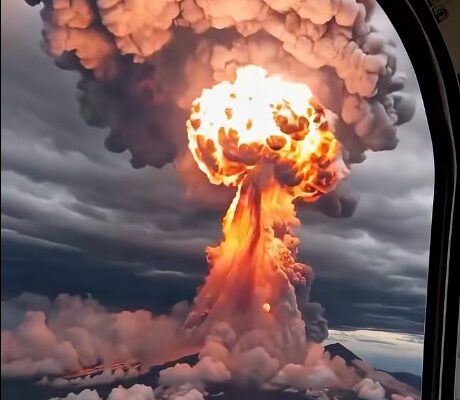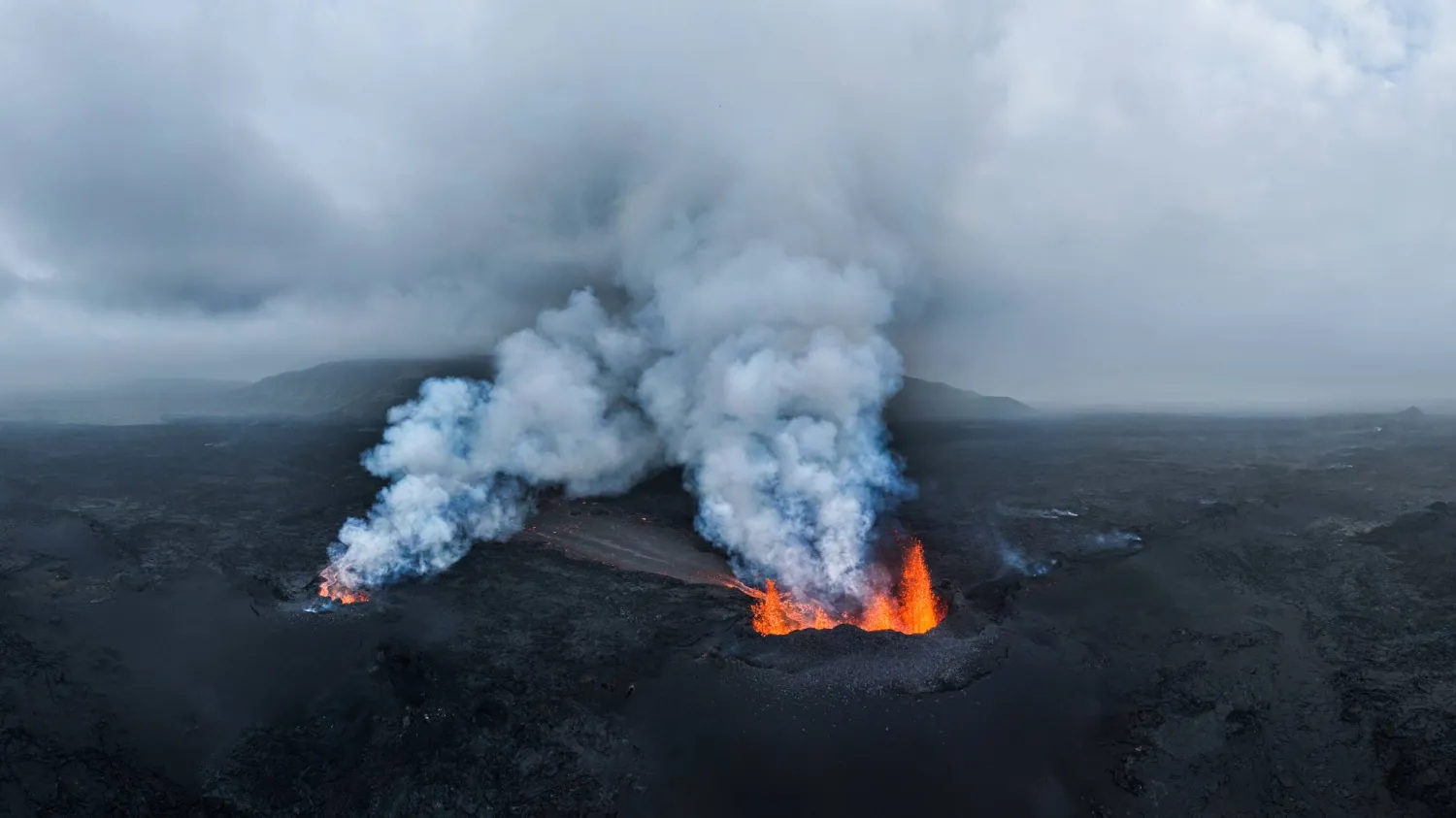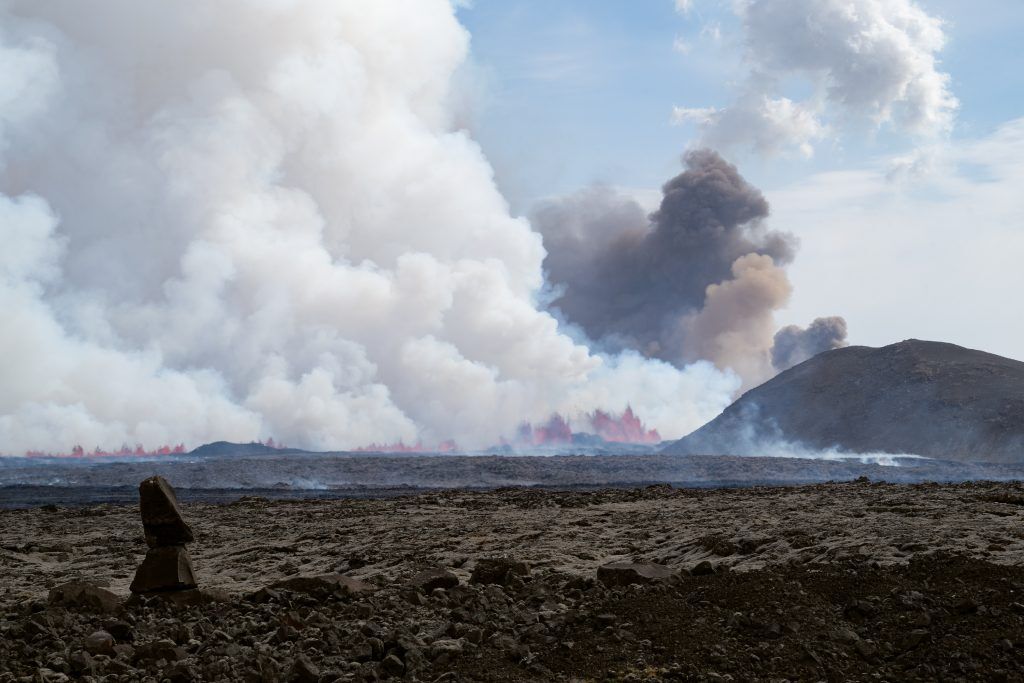Iceland’s Relentless Awakening: When Fire and Ice Collide Beneath Grindavik’s Skies
Iceland — a nation sculpted by glaciers and volcanoes — has once again found itself balancing on the edge of awe and anxiety.
What began as a breathtaking display of nature’s artistry has evolved into a long and uncertain ordeal for those living closest to the Earth’s fiery core. In the small coastal town of Grindavik, where nearly 4,000 residents once led peaceful lives between ocean waves and steaming lava fields, the ground now quivers with restless energy. The once-stable soil has fractured, homes have been threatened, and a community has learned what it truly means to live in the shadow of creation itself.

A Region Stirring from Centuries of Silence
For hundreds of years, the Reykjanes Peninsula had remained quiet — its volcanoes dormant, its fissures sealed. Then, in 2021, the Earth began to stir. A faint hum of earthquakes signaled a reawakening deep below the crust. Scientists at the Icelandic Meteorological Office watched in fascination as magma began moving upward, hinting at a new volcanic chapter in the nation’s long and storied geological history.
The early eruptions were spectacular yet merciful. They illuminated the night skies without claiming lives, drawing scientists, photographers, and tourists eager to witness the rebirth of Iceland’s fiery heart. But as the activity persisted into 2023 and 2024, excitement gave way to unease. What had begun as a distant wonder had crept dangerously close to people’s homes.
When the Earth Opened Beneath Grindavik
By late October 2023, the tremors beneath Grindavik had grown impossible to ignore. The town’s streets cracked, water pipes burst, and the ground itself seemed to breathe. Then, in December, a fissure tore open northeast of the town — a violent reminder that Iceland lives upon moving ground. Molten rock surged upward, spilling across barren plains toward inhabited zones. Although the eruption ended after three days, it served as an unmistakable warning: the peninsula’s dormant power was awake again.
Another eruption in January 2024 reinforced the threat. Lava surged perilously close to Grindavik, destroying three evacuated homes on the outskirts. Thankfully, no one was harmed — a testament to Iceland’s advanced alert systems and swift evacuations. Through satellite imagery, ground-based sensors, and real-time drone surveillance, authorities managed to stay one step ahead of disaster, ensuring that what could have been a national tragedy became a remarkable story of preparedness.
A Year Under Fire
As 2024 unfolded, the volcanoes refused to rest. The Sundhnúksgígar crater row — a long chain of fissures and vents — became the epicenter of ongoing eruptions. The Earth erupted intermittently throughout the year: brief outbursts in February and August, followed by continuous flows from March through April and again in May.
Each eruption brought awe-inspiring spectacles — glowing fountains of lava leaping into the air, rivers of molten rock snaking through the darkness — but also logistical nightmares. Roads were blocked, air quality declined, and residents endured weeks of uncertainty. For scientists, these events provided an unprecedented opportunity to study how Iceland’s crust behaves under pressure. For locals, however, it was a year defined by vigilance, adaptation, and the constant hum of the planet beneath their feet.

2025: The Cycle Intensifies
By 2025, researchers began referring to the phenomenon as an ongoing “volcanic series.” The eruptions appeared connected through an expansive underground magma corridor that stretched beneath the Reykjanes Peninsula. The eighth eruption, in April, painted the sky crimson once again, while a new fissure that opened near Litla-Skógfell Mountain in July unleashed fresh lava across nearby volcanic plains.
Although most of the molten flow spared populated regions, the danger remained real. Authorities ordered precautionary evacuations of popular destinations, including the Blue Lagoon, one of Iceland’s most iconic tourist attractions. Campsites and rural settlements were temporarily cleared as drones captured surreal footage of lava rivers glowing against the midnight sun — a haunting image of beauty entwined with destruction.
Living on the Edge: Resilience Amid Ruin
Icelanders, long accustomed to their island’s volatile temperament, responded with characteristic calm and resolve. The government, in collaboration with the Department of Civil Protection and Emergency Management, maintained constant communication with citizens. Real-time alerts were sent to phones when tremors intensified, and emergency shelters were prepared to accommodate displaced families.

Evacuation drills became a regular part of community life. Roads were closely monitored for cracks caused by underground magma movements, while scientists held public briefings to explain the unfolding events. “You can’t control the Earth,” said one Grindavik resident, watching smoke rise in the distance, “but you can learn to live with it. That’s what being Icelandic means.”
Why Iceland Burns Beneath the Ice
The key to Iceland’s volatility lies in its geography. The island straddles the Mid-Atlantic Ridge, a massive rift where the North American and Eurasian tectonic plates drift apart. As these plates separate, magma surges upward to fill the gaps, creating new crust — and, at times, violent eruptions.

What makes this current period exceptional is its location and frequency. While eruptions have always shaped Iceland’s landscape, the present activity is occurring alarmingly close to inhabited areas. Historical records suggest that volcanic cycles on the Reykjanes Peninsula occur roughly every 800 to 1,000 years. If that pattern holds true, the events unfolding today may mark the beginning of a new geological age — one that could last decades or even centuries.
Scientists are cautiously optimistic. Smaller, frequent eruptions may actually relieve underground pressure, preventing larger, catastrophic explosions. Still, the unpredictability keeps everyone — from geologists to local families — on edge.
Conclusion: Between Awe and Uncertainty
As of October 2025, the most recent eruption has subsided, but the Earth remains restless. Seismic instruments continue to register tremors beneath the peninsula, and experts warn that new fissures could open without warning. Grindavik, though battered, stands resilient — its people adapting to a life lived alongside uncertainty.

Iceland’s remarkable disaster preparedness has once again drawn admiration from around the world. Its combination of real-time monitoring, community drills, and scientific transparency serves as a model for nations facing their own natural hazards. Yet even with the best systems in place, the fundamental truth remains: nature answers to no one.

For scientists, each eruption brings invaluable data about the planet’s inner workings. For residents, it is a reminder of humility — that beneath the beauty of Iceland’s landscapes lies a living, breathing Earth, reshaping itself one eruption at a time.
In Grindavik, where lava meets the sea, the people wait and watch — knowing that the next rumble could signal either a new beginning or another test of endurance. Between the fire and the ice, Iceland continues to remind the world of both the fragility and the strength of life on a restless planet.



